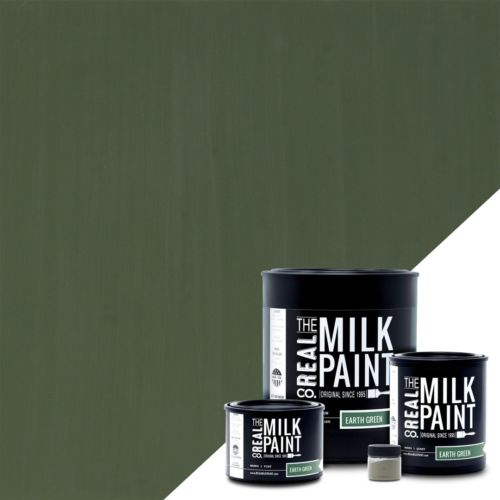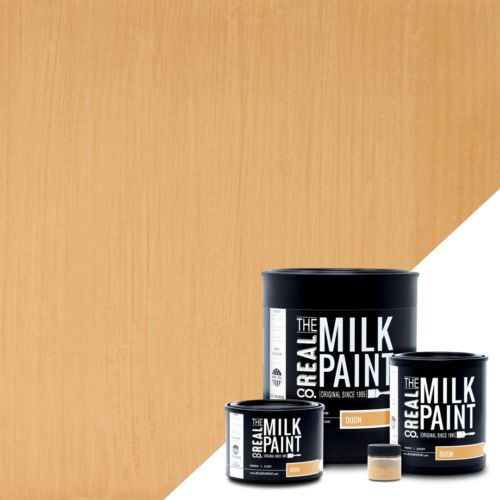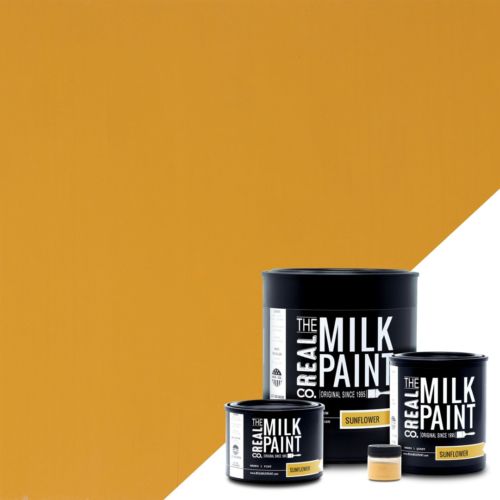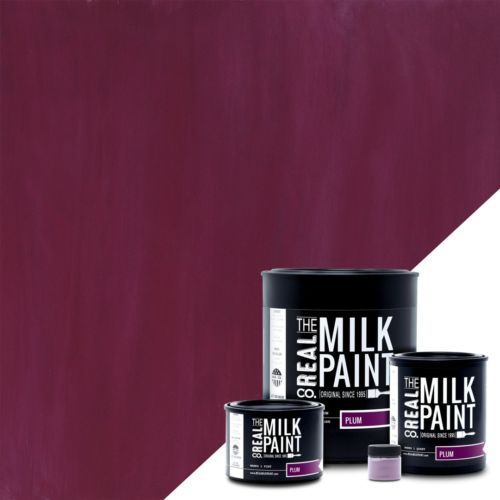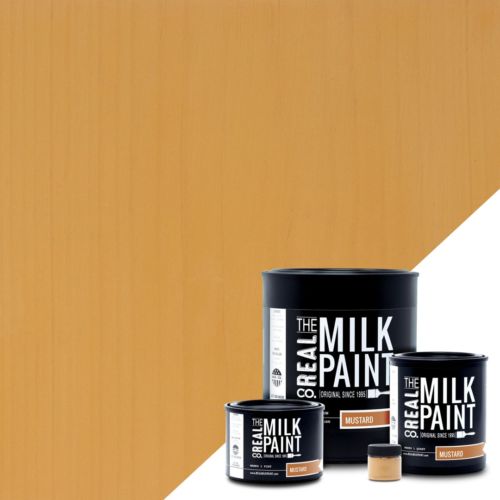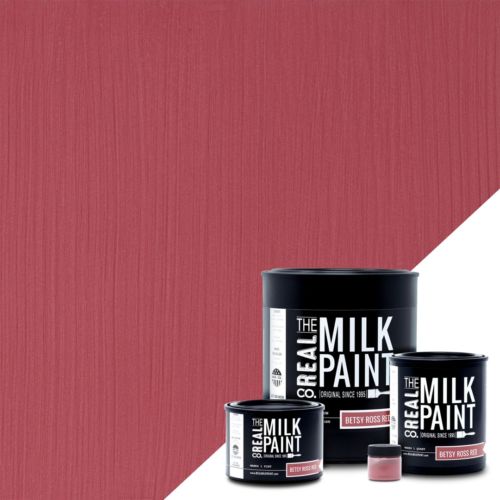 When you’re considering remodeling old homes and outbuildings to a state that honors their former grandeur, milk paint colors can help you achieve historically accurate renovation results. Milk paints are some of the oldest known mediums due to natural ingredients and pigments that were easily available. As such, they were popular as homes spread across the United States during its settlement. This makes Real Milk Paint, whose ingredients mirror that of the past, a historically accurate option for renovating historic homes. Before planning your historic house painting job, however, you need to understand historical home styles and the correct paint colors for each one.
When you’re considering remodeling old homes and outbuildings to a state that honors their former grandeur, milk paint colors can help you achieve historically accurate renovation results. Milk paints are some of the oldest known mediums due to natural ingredients and pigments that were easily available. As such, they were popular as homes spread across the United States during its settlement. This makes Real Milk Paint, whose ingredients mirror that of the past, a historically accurate option for renovating historic homes. Before planning your historic house painting job, however, you need to understand historical home styles and the correct paint colors for each one.
When selecting historically accurate paint colors, it’s essential to consider the regional differences that shaped color choices in early American homes. The availability of local materials, climate conditions, and cultural influences all played a role in the development of color palettes. For example, in the harsh winters of New England, settlers often chose deeper reds and browns that reflected the iron-rich soil, while Southern homes, with their warmer climates, frequently featured lighter shades of yellow and orange. Additionally, cultural influences such as European settlers brought their traditions and preferences, further diversifying the color schemes in different regions.
Planning Historical Exterior Paint Colors
Truly capturing the ethos of the time your home was built requires a bit of research and attention to detail when historic homeowners are striving for historically accurate results. The one thing all the early American styles have in common, however, is that they used local organic materials to make their paint. Unlike now when you can just go down to the paint store to get a couple of premixed cans, our forefathers had to get creative with pigments in whatever rocks and earth they had on hand. For example, red and brown-heavy palettes were typical in historic New England, while orange and yellow were more common color schemes in the south.
Planning Historical Interior Paint Colors
Just as exterior colors are important, interior paint choices also significantly impact the historical accuracy of a renovation. Each room in a historic home often had specific color schemes that were appropriate for its use and significance. For instance, parlors in Colonial homes might have featured muted earth tones, while Victorian dining rooms often displayed deep, rich colors like burgundy and dark green. When selecting colors for interior spaces, consider the historical context and functionality of each room. Pair colors with historically accurate trim, ceilings, and woodwork to create a cohesive and authentic look throughout your home.
Navigating Historic District Regulations
If your home is located in a designated historic district, there may be specific guidelines or regulations governing the paint colors you can use. These regulations are often put in place to maintain the visual integrity of historic neighborhoods. Real Milk Paint offers a wide range of historically accurate colors that comply with these guidelines, making it easier for you to gain approval for your restoration project. Before you begin, it’s advisable to check with your local historical society or preservation board to understand the requirements and ensure your color choices are approved.
Milk Paint Historical House Colors by Style
If you truly wish to make your milk paint historic house painting project as realistic as possible, note the time period and use only colors that were available during the era. While you probably hadn’t thought about it, many of your favorite colors simply weren’t available in paint form until the advent of synthetic pigments in the 20th century. Be sure to research the history of your home, including the year it was built, to ensure you select the correct paint colors. Also, if you live in an area or a home that’s officially designated as historic, local interests may have a specific color scheme list they require you to use to maintain historic accuracy.
American Colonial
Simple, squared and symmetrical, American Colonial homes typically sported a muted color scheme. Since their builders used locally available pigments like burnt umber, raw ochre and indigo, these historic homes often boasted a darkly hued body color with off-white being the predominant accent color. When planning historical exterior paint colors to complement American Colonial homes, focus on earthy hues balanced with various shades of off-white. Real Milk Paint palettes for historic houses in this style include Paprika, Blue Spruce, Pearl, Warm Ash and Soft White.
Federal
Developed in an attempt to break away from the past as a colony of Britain, post-revolutionary Federal architectural styling rose to prominence in the burgeoning Republic. This architectural style was particularly popular along the Eastern seaboard in cities such as Philadelphia, New York and Boston thanks to a lightness — think sage rather than forest greens and cerulean rather than navy — that stood in stark contrast to heavier American Colonial homes. Real Milk Paint colors that work well in Federal palettes include Yellow Rose, Pumpkin, Stone Blue, and Deep Sapphire.
Georgian and Greek Revival
Georgian and Greek Revival buildings and homes flaunted the lines of classic temples, with most of them constructed from wood and featuring white-toned body paint. Typically the trim and body were the same color, though doors and shutters boasted darker hues for a pop of contrast. Real Milk Paint colors that fit effortlessly with Georgian and Greek Revival historic house painting plans include Soft White and Parchment for the body and Earth Green and Black Iron for the door and shutters.
Victorian
Popular during the reign of Queen Victoria, Victorian home designs made heavy use of industrial revolution-era woodworking innovations. Wood ornamentation abounds in these homes, with steeply pitched roofs and asymmetrical features common in their design as well. While three-color palettes were the norm in the Victorian era, later evolutions in the style often used four to five hues, spreading complementary or even contrasting color across the sash, body and trim. Real Milk Paint historical exterior paint colors that mesh with this era include Lily Pad, Plum, Sunflower, Flag Red and Dijon.
Queen Anne
Homes with the Queen Anne architectural style often have a charming rambling quality with mismatched design elements and asymmetrical lines. Whimsical features like irregular towers, different-sized windows and sprawling porches also make rather frequent appearances in this design style, and these homes regularly boast molded mastic decorative motifs for a fun finishing touch. When planning old historic house painting for exteriors with styling, keep in mind that you need one or two strong colors plus a trim color that ties them together. Real Milk Paint colors that adhere to classic Queen Anne styling include Mocha, Tree Bark, Betsy Ross Red, and Mustard.
Historical House Painting Techniques and Materials
Restoring a historic home requires not only selecting the right colors but also understanding the traditional techniques and materials used in the original construction. Historical painting methods, such as lime washing or oil-based applications, differ from modern practices, resulting in distinct textures and finishes that are integral to the home’s character. Additionally, many original pigments were mixed by hand using natural materials like ochre, indigo, and iron oxide. Using Real Milk Paint, which closely resembles these historical formulations, helps you achieve a truly authentic restoration that honors the craftsmanship of the past.
Durability and Maintenance of Historic Paint Colors
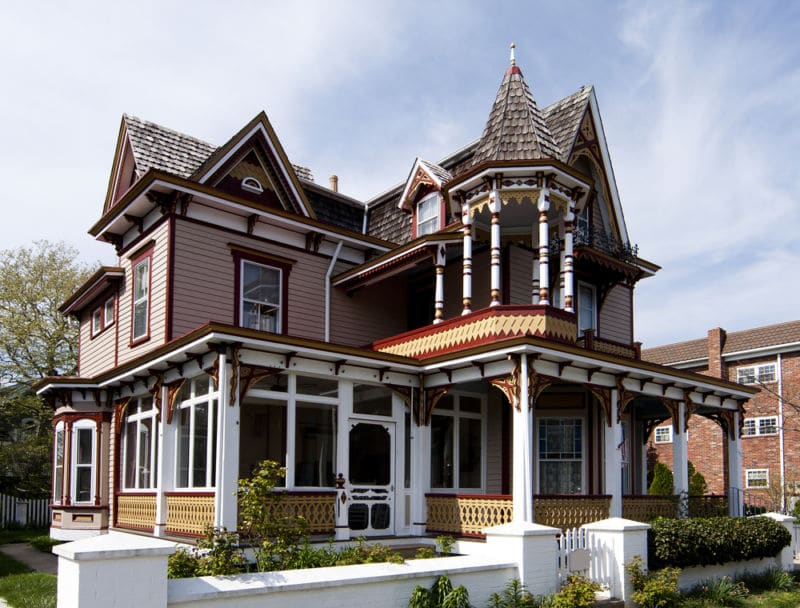 While selecting historically accurate colors is crucial, ensuring their longevity is equally important. Real Milk Paint, when paired with our Outdoor Additive or Pure Tung Oil, offers enhanced durability for exterior surfaces, protecting them from weathering and UV damage. For interior surfaces, our Soft Wax or Finishing Creams provide a protective layer that maintains the paint’s historical appearance while making it easier to clean and maintain. By using these products, you can ensure that your historic home retains its beauty for years to come without compromising on authenticity.
While selecting historically accurate colors is crucial, ensuring their longevity is equally important. Real Milk Paint, when paired with our Outdoor Additive or Pure Tung Oil, offers enhanced durability for exterior surfaces, protecting them from weathering and UV damage. For interior surfaces, our Soft Wax or Finishing Creams provide a protective layer that maintains the paint’s historical appearance while making it easier to clean and maintain. By using these products, you can ensure that your historic home retains its beauty for years to come without compromising on authenticity.
Using Real Milk Paint on Historic Home Exteriors
There are advantages abound to using Real Milk Paint for most any home improvement project, but using milk paint for historical exterior paint colors proves especially helpful. Made much in the way milk paints were formulated in eras past, Real Milk Paint boasts all-natural ingredients that are non-toxic and safe for use around kids or pets. Good for the environment and requires no special handling, our milk paint utilizes simple ingredients like milk casein for historic house painting projects you can feel good about. Additionally, no volatile organic compounds (VOCs) in the formulation mean you can use Real Milk Paint in tighter spaces, and the powdered formulation lets you mix only as much as you need at a time and allows storage of premixed paint for up to 2 weeks.
Restoring your old historic house by painting the exterior with Real Milk Paint helps you bring it back to its former glory in a historically accurate fashion. Do your homework first by dating your home back to its original date of the building, then choose Real Milk Paint colors that work with the home’s architectural style and fit with your creative vision. Whether you’re a historic homeowner, a preservation society, or an enthusiast, Real Milk Paint can work for you.
To get more information on the perfect colors for your historic house, contact us.










